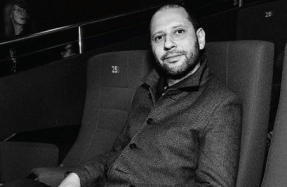WORLDLY WISE


ON APRIL 5, ISAO TAKAHATA, CO-FOUNDER of Studio Ghibli, passed away at the age of 82. For most Westerners, especially for those who became fans post–Princess Mononoke, Studio Ghibli is simply a synonym for Hayao Miyazaki’s films and imitators. Yet the studio and Miyazaki’s legacy would not exist without Takahata, an animation director who was an instrumental force in advancing Japanese animation in terms of technical skill and narrative refinement. Prior to Takahata’s pioneering work in the late 1960s and ’70s, anime was strictly kiddie stuff, intent on imitating the form and success outlined by Disney. Rather than simply reacting against or satirizing this variety of hand-drawn animated film (as has been the case in America for the past several decades, even though that type of Disney kiddie flick doesn’t exist anymore), Takahata continuously pushed the medium in bold new directions, usually taking the form of work that was more mature and less commercially viable. His best-known title outside of Japan—the devastating Grave of the Fireflies (1988)—is a testament to the power of animation to create worlds and feelings that live-action films rarely even aspire to. In a medium that necessarily recycles images to create the illusion of movement, Takahata stands out as an artist who never repeated himself.
A notorious perfectionist—so much so that he frequently missed deadlines, sometimes by years—Takahata has been credited by collaborators as “the serious one” who pushed Miyazaki toward more complex themes in seminal works like (1984) and (1986). Nevertheless, there’s no need to make the argument that one Ghibli co-founder was secretly superior to the other, or that there was anything uneasy about their partnership. The work of Miyazaki and Takahata was always collaborative, taking the form of a friendly competition in the latter part of their careers when they directed and wrote films separately. (Studio Ghibli Miyazaki’s the same release date as a means of motivation; despite beginning production years earlier, Takahata’s film went to Japanese theaters four months after Miyazaki’s.) The two men met while working at Toei Doga, the country’s major animation studio, which sought to be the Disney of Asia, and bonded over their shared passion for literature and desire to push their work and the animation medium forward. Miyazaki (who at the time was a union rep) broke union rules to work over the weekends, sans AC, as scene designer on Takahata’s first directorial feature, , (1968). It was an adaptation of an Ainu tale that was transposed to a Scandinavian kingdom at the behest of the studio (the Ainu are indigenous peoples that have been discriminated against by ethnic Japanese). The story broke with previous cartoon folklore adaptations by emphasizing psychological realism, while the animation featured ambitious designs, smoother cuts and movements, and more realistic fights—no “Mickey Mousing” to be seen.
You’re reading a preview, subscribe to read more.
Start your free 30 days



